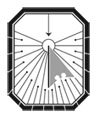The Challenge of Peace Building and Conflict Transformation: A Case Study of Northern Ireland
DOI:
https://doi.org/10.18523/kmlpj88597.2016-2.129-146Keywords:
Northern Ireland, peacebuilding, conflict transformation, inclusiveness, sustainability, United NationsAbstract
This paper provides an overview of the transition from armed conflict to peace in Northern Ireland between 1994 and 2016. It discusses the main stages of the peace process and the main elements of the peace agreement in relation to the development of global thinking around peacebuilding as set out in the United Nations 1992 report Agenda for Peace and the 2000 Brahimi Report. The paper argues that while Northern Ireland is often highlighted as a positive example of peacebuilding, its example is not without limitations. Overall, the experience of the past twenty years emphasizes the importance of ensuring a broadly inclusive process and the need for a sustained commitment over a long period.References
- Borer, Tristan Anne, John Darby, and Siobhán McEvoy-Levy. Peacebuilding After Peace Accords: The Challenges of Violence, Truth and Youth. Notre Dame, Ind.: University of Notre Dame Press, 2006.
- Bose, Sumantra. Bosnia After Dayton: Nationalist Partition and International Intervention. New York; Oxford: Oxford University Press, 2002.
- Boutros-Ghali, Boutros. An Agenda for Peace. New York, United Nations, 1992. (Available at: http://www.un-documents.net/a47-277.htm. Accessed May 25, 2016.)
- Brahimi Report. Report of the Panel on United Nations Peace Operations. New York, United Nations, 2000. (Available at: http://www.un.org/en/ga/search/view_doc.asp?symbol=A/55/305. Accessed May 25, 2016.)
- Brewer, John. Peace Processes: A Sociological Approach. Cambridge: Polity Press, 2010.
- Bush, Kenneth, and Kenneth Houston. The Story of Peace: Learning from EU PEACE Funding in Northern Ireland and the Border Region. Derry: University of Ulster, 2011.
- Collier, Paul. Wars, Guns and Votes: Democracy in Dangerous Places. London: Vintage Books, 2010.
- Darby, John, ed. Violence and Reconstruction. Notre Dame, Ind.: University of Notre Dame Press, 2006.
- Ellison, Graham, and Jim Smyth. The Crowned Harp: Policing Northern Ireland. London: Pluto Press, 2000.
- Galtung, Johann. Theories of Peace: A Synthetic Approach to Peace Thinking. Oslo: International Peace Research Institute, 1967.
- Hamdan, Amal. “The Limits of Corporate Consociation: Taif and the Crisis of Power Sharing in Lebanon since 2005.” In Lebanon After the Cedar Revolution, edited by Are Knudsen and Michael Kerr, 39–59. London: Hurst, 2012.
- Jarman, Neil. Material Conflicts: Parades and Visual Displays in Northern Ireland. Oxford: Berg, 1997.
- Jarman, Neil. “Managing Conflict by Phone: The Mobile Phone Networks in Northern Ireland.” In People Building Peace II: Successful Stories of Civil Society, edited by Paul van Tongeren, Malin Brenk, Marte Hellema and Juliette Verhoeven, 435–40. Boulder, Colo.: Lynne Rienner Publishers, 2005.
- Jarman, Neil. “Vigilantism, Policing and Transition: Informal Justice in Northern Ireland.” In Global Vigilantes: Anthropological Perspectives on Justice and Violence, edited by David Pratten and Atreyee Sen. London: Hurst, 2007.
- Jarman, Neil. “Managing Violence and Building Peace from Below.” In Democracy in Crisis: The Dynamics of Civil Protest and Civil Resistance, Peace Report 2012, edited by Bert Preiss and Claudia Brunner, 263–83. Vienna; Berlin: Lit-Verlag, 2013.
- Jarman, Neil, and Geraldine Scullion. “Protecting Rights or Limiting Disorder? Freedom of Assembly and the Right to Protest.” Shared Space 15 (2013): 5–16.
- Kennedy. Liam. Who Was Responsible for the Troubles? Essays on the Northern Ireland Conflict. Dublin: Merrion Press, forthcoming.
- Lederach, John-Paul. Building Peace: Sustainable Reconciliation in Divided Societies. Washington: United States Institute of Peace, 1997.
- Miall, Hugh, Oliver Ramsbotham, and Tom Woodhouse. Contemporary Conflict Resolution. Cambridge: Polity Press, 2001.
- Nolan, Paul, Dominic Bryan, Claire Dwyer, Katy Hayward, Katy Radford, and Peter Shirlow. The Flag Dispute: Anatomy of a Protest. Belfast: Queen’s University, 2014.
- Patten Report. A New Beginning: Policing in Northern Ireland. Belfast: Independent Commission on Policing for Northern Ireland, 1999.
- Putnam, Robert. Bowling Alone: The Collapse and Revival of American Community. New York: Simon and Schuster, 2000.
- Taylor, Rupert. Consociational Theory: McGarry and O’Leary and the Northern Ireland Conflict. Abingdon: Routledge, 2009.
Downloads
Published
How to Cite
Issue
Section
License
Copyright (c) 2016 Neil Jarman

This work is licensed under a Creative Commons Attribution 4.0 International License.
Kyiv-Mohyla Law and Politics Journal provides free access to original research without restriction barriers (i.e. subscription fees, licensing fees etc.).
Unless otherwise indicated, content is licensed under the Creative Commons Attribution 4.0 International (CC BY 4.0) license, which means you are free to:
distribute, remix, tweak, and build upon your work, even commercially
...provided that any use is made with attribution to author(s) and Kyiv-Mohyla Law and Politics Journal.
The copyright in the article or any other submission to Kyiv-Mohyla Law and Politics Journal shall remain with the author(s).
The journal allows the author(s) to hold the copyright without restrictions and will retain publishing rights without restrictions.








